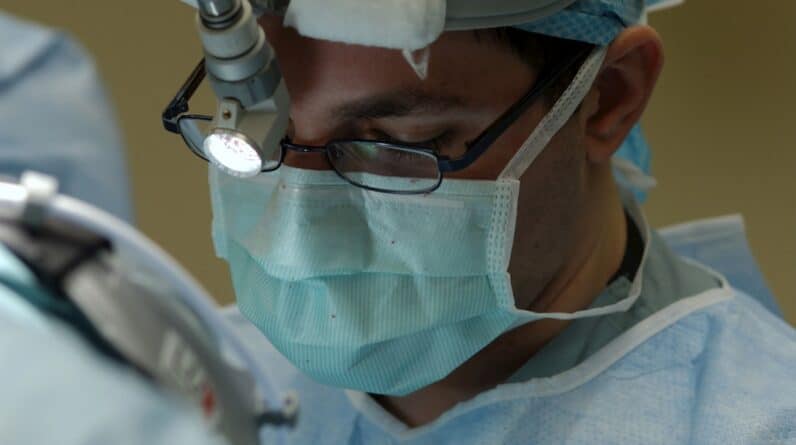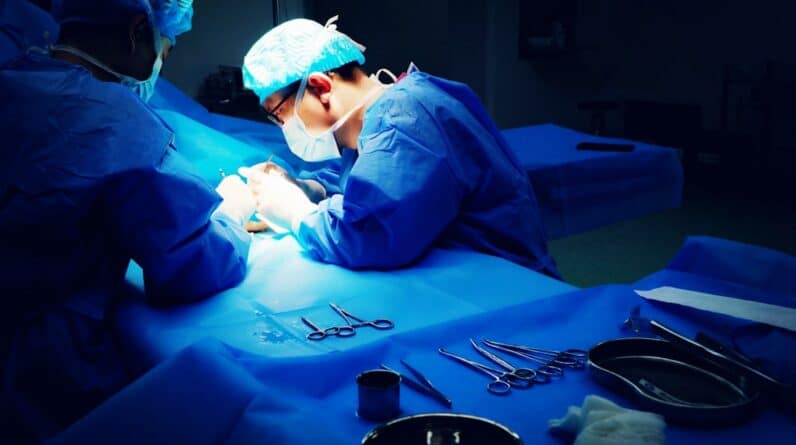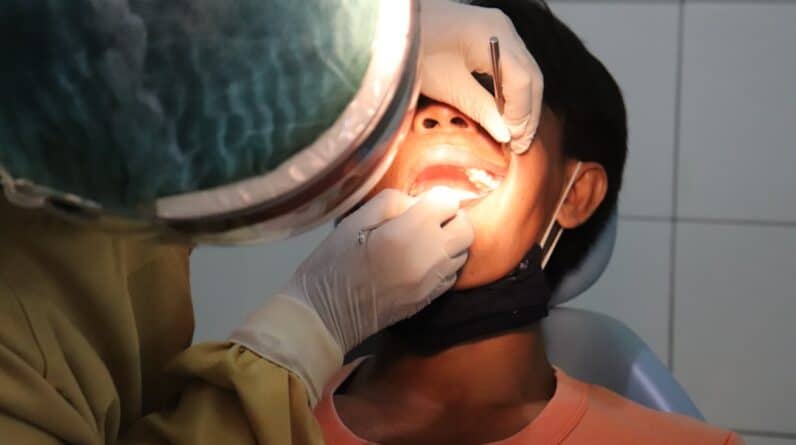High-prescription LASIK surgery is a specialized form of laser eye surgery designed to correct severe refractive errors, such as high myopia (nearsightedness) and hyperopia (farsightedness). Unlike traditional LASIK, which is often suitable for patients with mild to moderate vision issues, high-prescription LASIK employs advanced technology and techniques to address more complex visual impairments. The procedure involves reshaping the cornea using a laser, allowing light to focus correctly on the retina, thereby improving vision.
This innovative approach has made it possible for individuals with significant vision challenges to achieve clearer sight without the need for glasses or contact lenses. The technology behind high-prescription LASIK has evolved significantly over the years. With the introduction of wavefront-guided LASIK and femtosecond lasers, surgeons can now create a more precise and individualized treatment plan tailored to your unique eye structure.
This precision is crucial for high-prescription patients, as even minor inaccuracies can lead to suboptimal results. Understanding the intricacies of this procedure is essential for anyone considering it, as it can provide life-changing benefits for those who have struggled with their vision for years.
Key Takeaways
- High-prescription LASIK surgery is a specialized procedure for individuals with severe nearsightedness, farsightedness, or astigmatism.
- Candidates for high-prescription LASIK surgery are those with a stable prescription, good overall eye health, and realistic expectations for the outcome.
- The benefits of high-prescription LASIK surgery include improved vision without the need for glasses or contact lenses, quick recovery, and long-term cost savings.
- Risks and complications of high-prescription LASIK surgery may include dry eyes, glare, halos, and undercorrection or overcorrection of vision.
- Preparing for high-prescription LASIK surgery involves a comprehensive eye examination, discussing expectations with the surgeon, and following pre-operative instructions carefully.
Who is a Candidate for High-Prescription Lasik Surgery?
Determining whether you are a candidate for high-prescription LASIK surgery involves a comprehensive evaluation of your eye health and vision needs. Generally, candidates should be at least 18 years old and have a stable prescription for at least one year prior to the procedure. If you have high myopia or hyperopia, your prescription must fall within the acceptable range set by your surgeon.
Additionally, certain eye conditions, such as keratoconus or severe dry eye syndrome, may disqualify you from being a suitable candidate. Your overall health also plays a significant role in your candidacy. Conditions like autoimmune diseases or uncontrolled diabetes can affect healing and may complicate the surgery.
During your initial consultation, your eye care professional will conduct a thorough examination, including corneal mapping and other diagnostic tests, to assess your suitability for high-prescription LASIK. This evaluation is crucial in ensuring that you receive the best possible outcome from the procedure.
The Benefits of High-Prescription Lasik Surgery

One of the most significant benefits of high-prescription LASIK surgery is the potential for improved quality of life. For many individuals with severe refractive errors, daily activities such as reading, driving, or participating in sports can be challenging without corrective lenses. By undergoing this procedure, you may find that you can engage in these activities with greater ease and confidence.
The freedom from glasses or contact lenses can be liberating, allowing you to enjoy life without the constant hassle of visual aids. Moreover, high-prescription LASIK surgery often leads to long-lasting results. Many patients experience significant improvements in their vision immediately after the procedure, with some achieving 20/25 vision or better.
This level of clarity can enhance not only your daily activities but also your overall well-being. Additionally, advancements in technology have made the procedure safer and more effective than ever before, further increasing the likelihood of successful outcomes.
Risks and Complications of High-Prescription Lasik Surgery
While high-prescription LASIK surgery offers numerous benefits, it is essential to be aware of the potential risks and complications associated with the procedure. As with any surgical intervention, there are inherent risks involved. Some patients may experience temporary side effects such as dry eyes, glare, halos around lights, or fluctuating vision during the initial recovery period.
These symptoms typically resolve within a few weeks but can be bothersome for some individuals. In rare cases, more severe complications can occur, such as undercorrection or overcorrection of vision, which may necessitate additional procedures or enhancements. There is also a small risk of developing infections or other complications that could affect your eyesight.
It is crucial to discuss these risks with your surgeon during your consultation so that you can make an informed decision about whether high-prescription LASIK is right for you.
Preparing for High-Prescription Lasik Surgery
Preparation for high-prescription LASIK surgery begins well before the actual procedure date. Your surgeon will provide you with specific instructions to follow in the weeks leading up to your surgery. This may include avoiding contact lenses for a certain period to allow your corneas to return to their natural shape.
You should also refrain from using eye makeup or lotions on the day of the surgery to minimize the risk of infection. Additionally, it’s essential to arrange for someone to drive you home after the procedure since your vision may be temporarily impaired. You may also want to prepare your home environment for recovery by ensuring that you have a comfortable space to rest and any necessary medications on hand.
Taking these steps will help ensure that you are physically and mentally ready for your high-prescription LASIK experience.
What to Expect During High-Prescription Lasik Surgery

On the day of your high-prescription LASIK surgery, you will arrive at the surgical center where you will be greeted by the medical staff and taken through a final pre-operative assessment. The procedure itself typically lasts less than 30 minutes per eye and is performed on an outpatient basis. You will be given numbing eye drops to ensure your comfort throughout the process.
Many patients report feeling minimal discomfort during the surgery. Once you are settled in the surgical chair, your surgeon will use a device to keep your eyelids open and then create a thin flap in the cornea using either a microkeratome or a femtosecond laser. After lifting the flap, the laser will be applied to reshape the cornea according to your specific prescription needs.
Once this step is complete, the flap is repositioned, and your surgery is finished. You will then be taken to a recovery area where you can rest before heading home.
Recovery and Aftercare for High-Prescription Lasik Surgery
Recovery after high-prescription LASIK surgery is generally quick and straightforward, but it does require some attention to aftercare instructions provided by your surgeon. In the first few days following the procedure, you may experience mild discomfort or a sensation similar to having something in your eye. This is normal and usually subsides within a few hours.
It’s essential to avoid rubbing your eyes during this time, as this could dislodge the corneal flap. Your surgeon will likely prescribe antibiotic and anti-inflammatory eye drops to help prevent infection and reduce inflammation during your recovery period. You should also plan on attending follow-up appointments to monitor your healing progress and ensure that your vision is stabilizing as expected.
Most patients notice significant improvements in their vision within a few days, but full stabilization may take several weeks.
Choosing the Right Surgeon for High-Prescription Lasik Surgery
Selecting the right surgeon for your high-prescription LASIK surgery is one of the most critical decisions you will make in this process. It’s essential to choose a board-certified ophthalmologist with extensive experience in performing LASIK procedures, particularly for high-prescription cases. Look for a surgeon who utilizes advanced technology and techniques tailored specifically for complex refractive errors.
During your initial consultation, take note of how comfortable you feel with the surgeon and their staff. A good surgeon will take the time to answer all your questions thoroughly and address any concerns you may have about the procedure. Additionally, consider seeking out reviews or testimonials from previous patients to gauge their experiences and satisfaction levels with their results.
Cost of High-Prescription Lasik Surgery
The cost of high-prescription LASIK surgery can vary significantly based on several factors, including geographic location, surgeon expertise, and technology used during the procedure. On average, you might expect to pay between $2,000 and $4,000 per eye for high-prescription LASIK surgery. While this may seem like a substantial investment upfront, many patients find that it pays off over time by eliminating ongoing expenses related to glasses or contact lenses.
It’s important to inquire about what is included in the quoted price when researching different surgical centers. Some facilities may offer financing options or payment plans that can make the procedure more accessible financially. Additionally, check if your health insurance covers any part of the cost; while many plans do not cover elective surgeries like LASIK, some may offer partial reimbursement.
Success Rates and Long-Term Results of High-Prescription Lasik Surgery
High-prescription LASIK surgery boasts impressive success rates, with studies indicating that over 90% of patients achieve 20/25 vision or better following their procedure. These results are particularly encouraging for individuals with severe refractive errors who may have previously felt limited by their vision challenges. Long-term studies show that most patients maintain their improved vision for years after surgery, making it a reliable option for those seeking lasting results.
However, it’s essential to understand that individual outcomes can vary based on factors such as age, overall eye health, and adherence to post-operative care instructions. Regular follow-up appointments with your eye care professional are crucial in monitoring your vision over time and addressing any concerns that may arise.
Alternatives to High-Prescription Lasik Surgery
If high-prescription LASIK surgery does not seem like the right fit for you after thorough consideration and consultation with an eye care professional, there are alternative options available for vision correction. One popular alternative is PRK (photorefractive keratectomy), which involves reshaping the cornea without creating a flap like in LASIK. PRK may be suitable for individuals with thinner corneas or those who are not candidates for traditional LASIK.
Another option is implantable contact lenses (ICLs), which involve placing a lens inside the eye without removing any corneal tissue. This method can be particularly beneficial for those with very high prescriptions or other eye conditions that make laser surgery less viable. Whichever route you choose, it’s essential to discuss all available options with your eye care provider to determine which solution best meets your needs and lifestyle preferences.
In conclusion, understanding high-prescription LASIK surgery involves recognizing its benefits and risks while preparing adequately for both the procedure and recovery process. By choosing an experienced surgeon and exploring all available options, you can make an informed decision that leads to improved vision and enhanced quality of life.
FAQs
What is high-prescription Lasik surgery?
High-prescription Lasik surgery is a type of laser eye surgery that is specifically designed for individuals with high degrees of nearsightedness, farsightedness, or astigmatism. It is a customized procedure that aims to correct vision by reshaping the cornea using a laser.
How does high-prescription Lasik surgery work?
During high-prescription Lasik surgery, a surgeon uses a laser to create a thin flap in the cornea. The surgeon then uses another laser to reshape the cornea to correct the refractive error. This allows light to focus properly on the retina, resulting in improved vision.
Who is a good candidate for high-prescription Lasik surgery?
Good candidates for high-prescription Lasik surgery are individuals who have stable vision and a high degree of nearsightedness, farsightedness, or astigmatism that cannot be effectively corrected with glasses or contact lenses. Candidates should also have healthy eyes and no underlying eye conditions.
What are the potential risks and complications of high-prescription Lasik surgery?
Like any surgical procedure, high-prescription Lasik surgery carries potential risks and complications, including dry eyes, glare, halos, undercorrection or overcorrection, and in rare cases, loss of vision. It is important for individuals considering the surgery to discuss these risks with their eye surgeon.
What is the recovery process like after high-prescription Lasik surgery?
After high-prescription Lasik surgery, patients may experience some discomfort, dryness, and blurry vision for a few days. It is important to follow the post-operative care instructions provided by the surgeon, which may include using prescribed eye drops and avoiding activities that could irritate the eyes.
How long does it take to see the results of high-prescription Lasik surgery?
Many patients experience improved vision within a day or two after high-prescription Lasik surgery, with continued improvement over the following weeks. However, it may take several months for vision to stabilize completely. Follow-up appointments with the surgeon are important to monitor progress.






